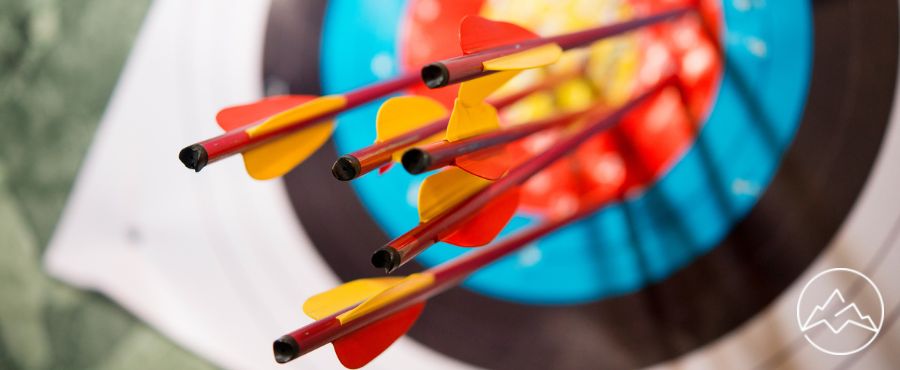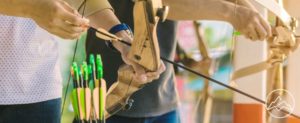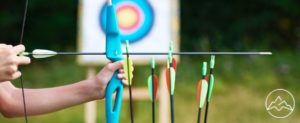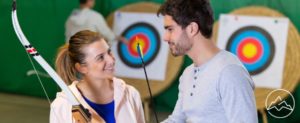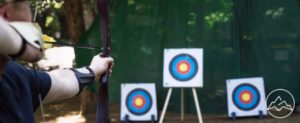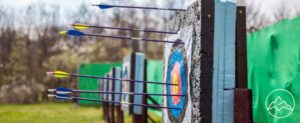In the exhilarating world of archery, where precision and skill are paramount, there is one element that reigns supreme: arrow speed. The speed at which an arrow travels through the air can make all the difference in competition and bow hunting alike. It is the force that propels the arrow towards its target, dictating its trajectory, distance, and impact. Like a soaring falcon, a swiftly moving arrow cuts through the air with the grace and precision of a masterful archer. In this ultimate guide to arrow speed, we will explore the factors that influence this critical component of archery performance. From draw weight and draw length, to arrow weight and fletching size, every element will be meticulously examined to uncover the secrets behind maximizing arrow speed. Join us on this journey of discovery and learn how to enhance your performance in archery through the power of speed.
Key Takeaways
- Factors that influence arrow speed include draw weight, draw length, and arrow weight.
- Faster arrows have benefits such as a flatter trajectory, improved distance estimation, and increased kinetic energy.
- Noise needs to be managed when hunting to avoid scaring animals.
- Maintaining accuracy while increasing speed improves the archer’s overall ability.
What Influences Speed?
Factors such as draw weight, draw length, and arrow weight have been identified as key influences on arrow speed in archery. The draw weight, which is the force required to pull the bowstring back, directly affects the potential energy stored in the bow. Increasing the draw weight can result in higher arrow speed. Similarly, extending the draw length, which is the distance the bowstring is pulled back, allows for more energy transfer to the arrow, increasing its speed. Additionally, using lighter arrows can improve arrow speed as they require less force to accelerate. Other methods of increasing arrow speed include optimizing the bow’s design, such as reducing friction in the cams and using a longer power stroke. By considering these factors and employing appropriate techniques, archers can enhance arrow speed and ultimately improve their performance in the sport.
Measuring Arrow Speed
Measuring arrow velocity is crucial in the field of archery as it provides valuable insights into the performance of the arrow. To accurately measure arrow speed, archers have two main options: using an arrow speed calculator or a chronograph. An arrow speed calculator is a tool that calculates the speed of an arrow based on factors such as draw weight, draw length, and arrow weight. It provides a convenient and quick way to determine arrow speed. On the other hand, a chronograph is a device that directly measures the speed of an arrow by detecting the time it takes for the arrow to pass through two sensors. This method offers a more accurate and precise measurement of arrow speed. Both the arrow speed calculator and chronograph are widely used by archers to assess the performance of their arrows and make necessary adjustments to enhance their overall archery experience.
Benefits of Faster Arrows
Increased arrow velocity has several advantages, including a flatter trajectory, improved distance estimation, and enhanced kinetic energy upon impact. When arrows are shot at higher speeds, they tend to follow a straighter path, making it easier for archers to adjust their aim and achieve improved accuracy. Additionally, faster arrows have increased kinetic energy, which translates to more power upon impact. This can be particularly beneficial in hunting situations, as it allows for deeper penetration and more effective kills. Moreover, the improved distance estimation provided by faster arrows compensates for any miscalculations that may occur during long-range shots. Overall, increasing arrow speed not only enhances the archer’s ability to hit targets with greater precision but also provides a more effective and efficient performance in archery.
- Faster arrows result in a flatter trajectory.
- Increased arrow velocity improves distance estimation.
- Faster arrows possess enhanced kinetic energy upon impact.
- Improved accuracy is achieved with increased arrow speed.
Frequently Asked Questions
How do weather conditions impact arrow speed?
Weather conditions can have a significant impact on arrow speed in archery. Temperature and humidity play a crucial role in arrow speed. As temperature increases, the air becomes less dense, resulting in a decrease in arrow speed. Conversely, colder temperatures increase the air density, leading to higher arrow speeds. Humidity also affects arrow speed, with higher humidity levels decreasing arrow speed due to increased air resistance. Additionally, wind can greatly influence arrow speed, as it creates resistance and can cause the arrow to veer off course.
What are some factors that can decrease arrow speed?
Factors that can decrease arrow speed include arrow trajectory and arrow weight. Arrow trajectory refers to the path that the arrow follows after being released from the bow. If the trajectory is not optimized, it can result in increased air resistance and drag, leading to a decrease in arrow speed. Additionally, using heavier arrows can also decrease arrow speed as they require more energy to propel through the air. It is important to carefully consider these factors to maintain optimal arrow speed and accuracy in archery.
Can arrow speed be increased without sacrificing accuracy?
Arrow speed can be increased without sacrificing accuracy by employing various techniques and strategies. One effective method is to optimize draw weight, draw length, and arrow weight to maximize velocity. Additionally, using high-quality arrows with appropriate fletching and reducing wind drag can enhance speed. Proper form and technique, such as consistent anchor points and release execution, are crucial for both speed and accuracy. Regular practice, along with fine-tuning equipment, can ensure a balance between increased arrow speed and precise shot placement.
How can noise be managed to avoid scaring animals while hunting?
Managing noise in archery hunting is crucial to avoid scaring animals. Effective camouflage techniques can aid in reducing noise by minimizing the chances of animals detecting the archer. This can include wearing clothing and gear that blend with the surroundings, utilizing natural cover, and moving slowly and quietly. Additionally, the use of limb, string, and cable silencers can help dampen vibrations and minimize noise produced by the bow, ensuring a stealthy approach and increasing the chances of a successful hunt.
Are there any potential drawbacks to increasing arrow speed?
Increasing arrow speed in archery can offer numerous benefits, including a flatter trajectory, improved distance estimation, and increased kinetic energy. However, it is important to consider potential drawbacks and safety concerns. One drawback of increasing arrow speed is the potential for decreased accuracy. Fast arrows may be more susceptible to wind drift, making precise shots more challenging. Additionally, the increased power and speed of arrows can pose safety risks if proper precautions are not taken, such as wearing appropriate protective gear and following safety guidelines.
Conclusion
In conclusion, arrow speed is a crucial aspect of archery that greatly influences an archer’s performance. By understanding the various factors that contribute to arrow speed, such as draw weight, draw length, and arrow weight, archers can enhance their performance and achieve greater accuracy. Faster arrows offer advantages like a flatter trajectory, improved distance estimation, and increased kinetic energy, all of which contribute to a more successful archery experience. By managing noise through the use of silencers, archers can further improve their hunting strategies. So, aim high, shoot fast, and let the arrows fly!

